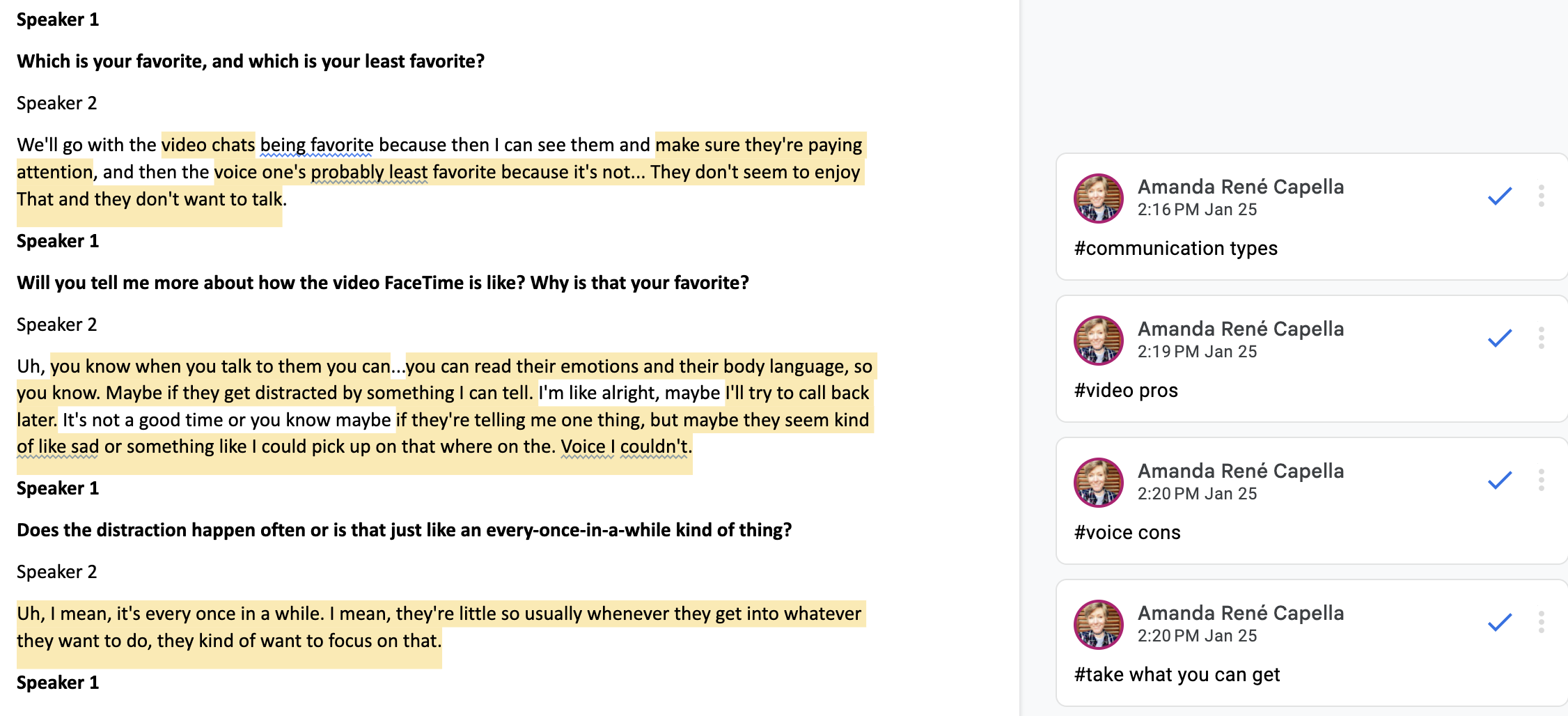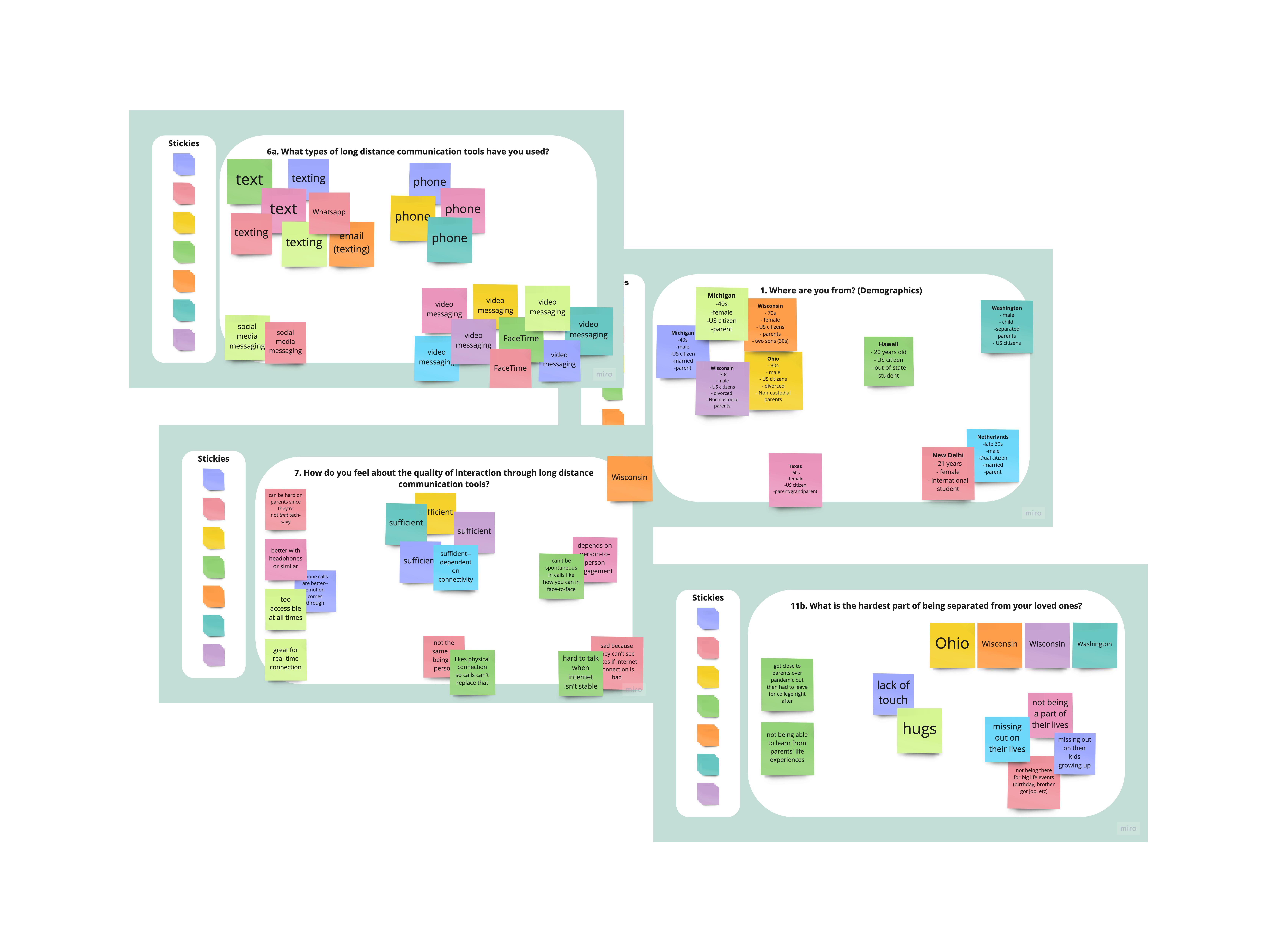Research
Our overall research process and findings were the first steps in our design process. It provided a strong building block of material and context, which we used to understand our potential users and their experiences better.
The process began with conducting user interviews with potential users who fit our leading target group, individuals currently experiencing physical separation from a loved one. The interview process involved giving participants a brief explanation and context regarding the project’s purpose and a set of questions. Whether we had any follow-up questions regarding providing more details about a certain response was dependent on the number of details the interviewee provided for a certain question. We kept our interviews loosely structured to allow for follow-up questions.
Coded Interview Sample
Since our user research and findings served as a foundation for how we understand and design for our users, it was important for us to be thorough in conducting this process. In the next few portions of our project, most of the material is highly reflective of our research findings, and it also informs us of what topics are the most pressing to our user group.

Affintiy Map Sample
After the interviews, it was important for us to be able to categorize and sort our answers for each question. First, we went through each of our 14 interviews and coded them using comments on google docs. We organized our interview data on a shared Miro board through affinity maps. Each interviewee was given a color, and we used our coding data to populate each category (interview question) with their corresponding answer. We found many shared similarities between our interviewees, which we noted as a factor that would have a bigger influence over our design.

